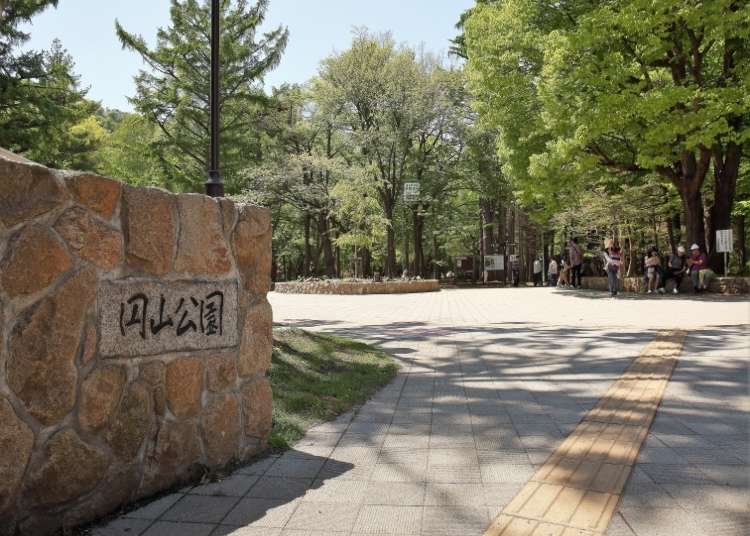
The Maruyama Zoo and Hokkaido Shrine in Sapporo City’s Maruyama Park District have become hot spots to visit in recent years. The stylish cafes dotting this residential area give it a stylish atmosphere.
Take a few steps further and you are in the vast natural beauty of a pristine forest. An increasing number of foreign visitors come here to experience Japanese culture amidst the verdant surroundings and scenes of frolicking animals.
These can be found in Maruyama Park, the increasingly popular Maruyama Zoo, and the Hokkaido Shrine.
1. Maruyama Park: Where Sapporoites come to relax
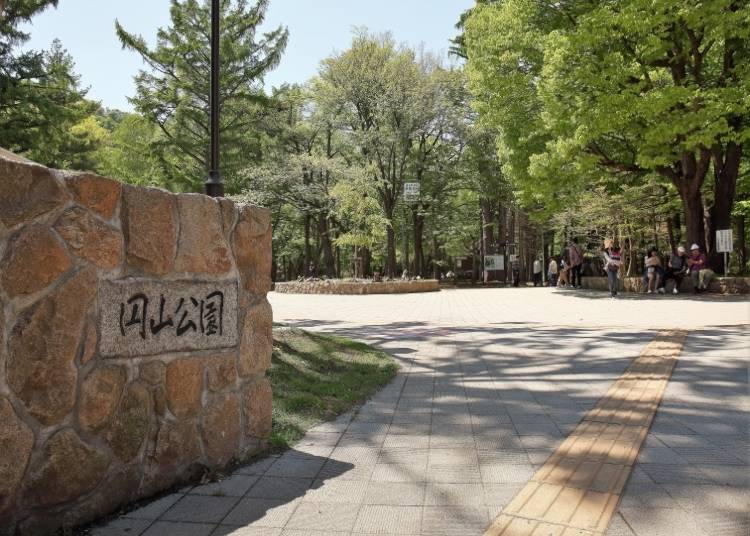
Maruyama Park is familiar to all the residents of Sapporo as a place for relaxation and rest. It is easily accessible by the Sapporo Metro Tozai Line and just a 5-minute walk from Maruyama Park Station.
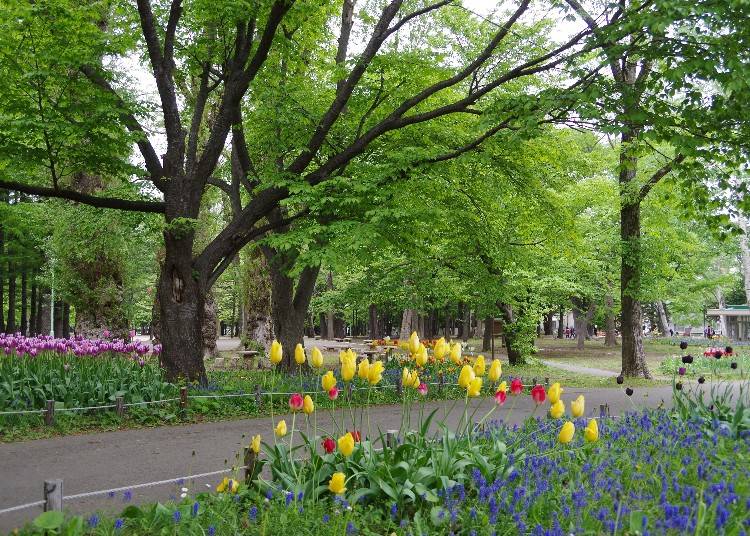
Close to the subway station, in spite of the expansive surrounding residential area, stepping into the park you will be amazed to find yourself in a verdant setting so unlike what you just left. The pristine natural forest around the park has been preserved and often squirrels can be seen darting about. It is hard to believe that such a place exists just a short distance from the station.
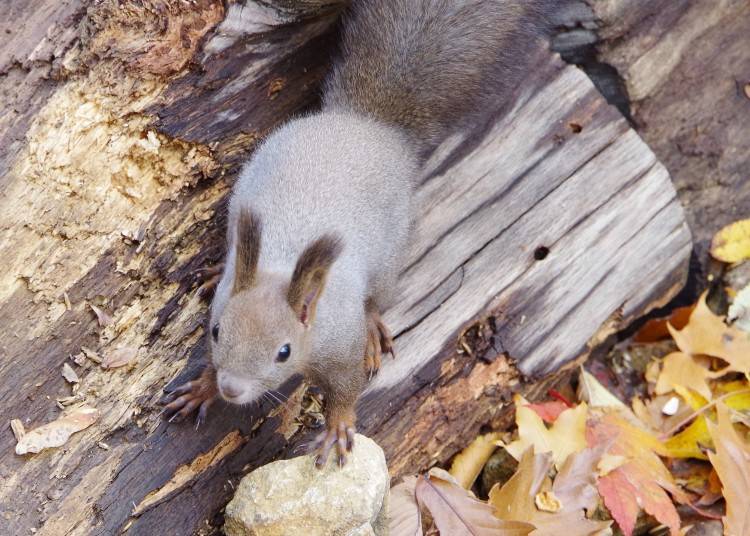
About 150 Ezoyamazakura (North Japanese Hill Cherries) come into full bloom in the park around the end of May every year bringing huge crowds of visitors to enjoy the view. Around the middle of October the leaves of the Katsura (Cercidiphyllum japonicum) and Yamaomiji (Japanese maple) turn into bright red, orange, and yellow colors. It is common to see visitors snapping photos of these delightful autumnal scenes.

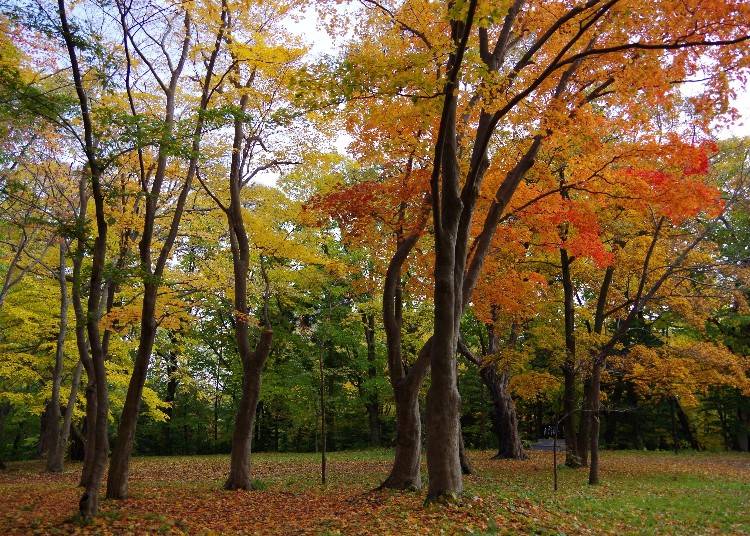
The number of foreign visitors to the adjacent Maruyama Zoo and Hokkaido Shrine has also been increasing in recent years and it is not an uncommon sight to see visitors enjoying strolling in the park amongst the locals.
If you walk from the Maruyama Park Station to Maruyama Zoo and Hokkaido Shrine, it is more enjoyable to do so by going through the park enjoying the natural scenery along the way. You are sure to enjoy the walk through the park on your way to those sites!
Open/Closed: free to walk anywhere
Access: 5-minute walk from the Sapporo Metro Tozai Line Maruyama Park Station
-

-
Address
Miyagaoka, Chuo-ku, Sapporo-shi, Hokkaido, 064-0959
View Map -
Nearest Station
Maruyama koen Station (Tozai Line)
5 minutes on foot
- Phone Number 011-621-0453
-
Address
Miyagaoka, Chuo-ku, Sapporo-shi, Hokkaido, 064-0959
2. Sapporo City Maruyama Zoo: See wild animals up close!
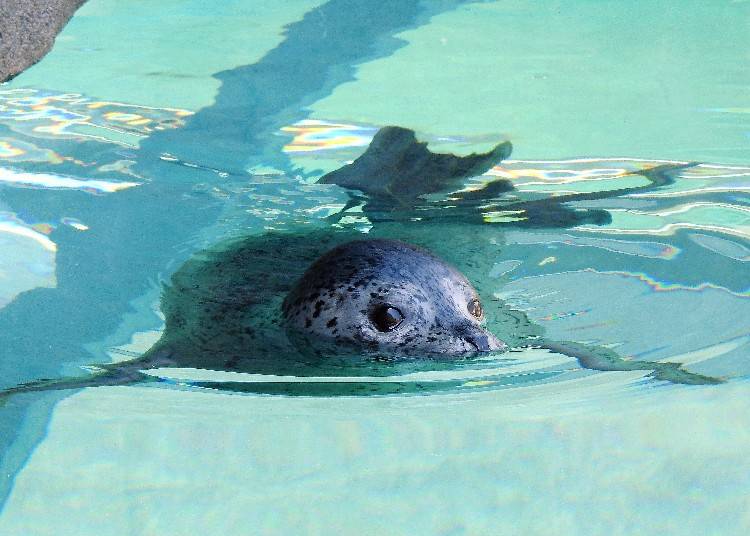
The Sapporo City Maruyama Zoo is not only popular among local residents, foreign sightseers from abroad as well who come to enjoy watching many types of animals frolicking in their confines. You can walk to the zoo in about 15 minutes from Maruyama Park Station; its proximity to the city center is one of the reasons for its popularity. Walking up the tree-lined path you will arrive at the entrance to the zoo. Let’s pay the admission fee and take a look inside.
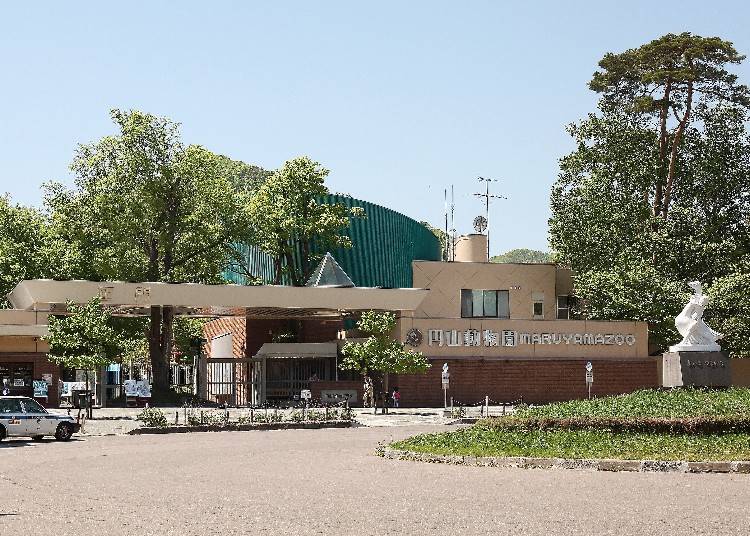
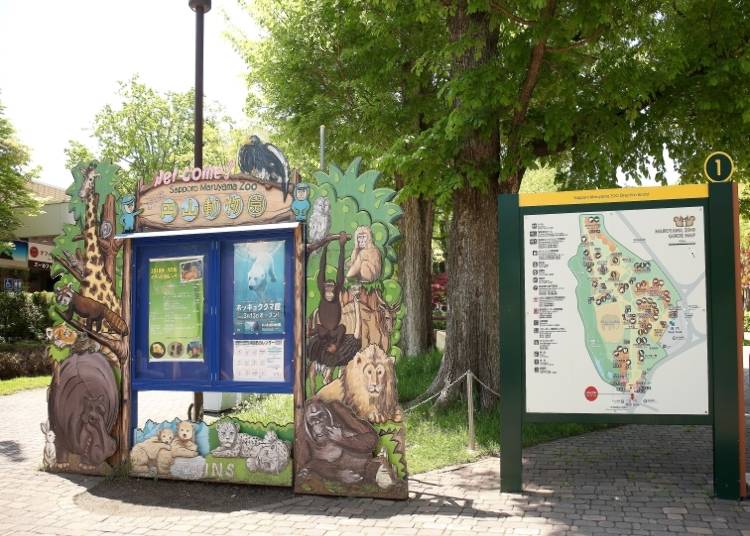
Many types of animals are exhibited within the zoo beginning with those unique to Hokkaido, such as the Yezo sika deer, Ussuri brown bear, Red-crown crane, and Steller’s sea eagle, as well as other animals found in northern regions, such as Japanese macaques and polar bears. There are also a number of animals from Africa and southern regions, too.

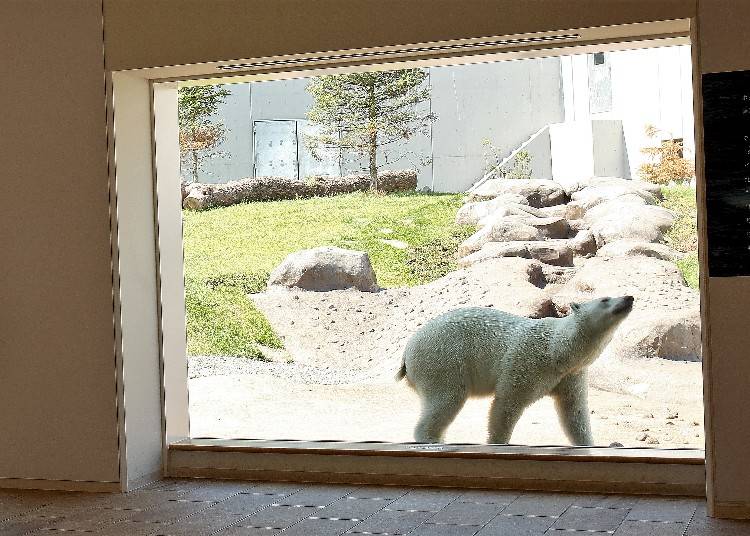
The Polar Bear Pavilion that opened in March 2018 with its polar bears and seals has drawn crowds. Polar bears hunt seals, but in the zoo, in order to reproduce their natural environment, the two are separated by a single plate of glass and as such exhibited side-by-side. Another unique view of these animals can be seen from within a glass tunnel that goes beneath their enclosures allowing you to see them swimming above you.
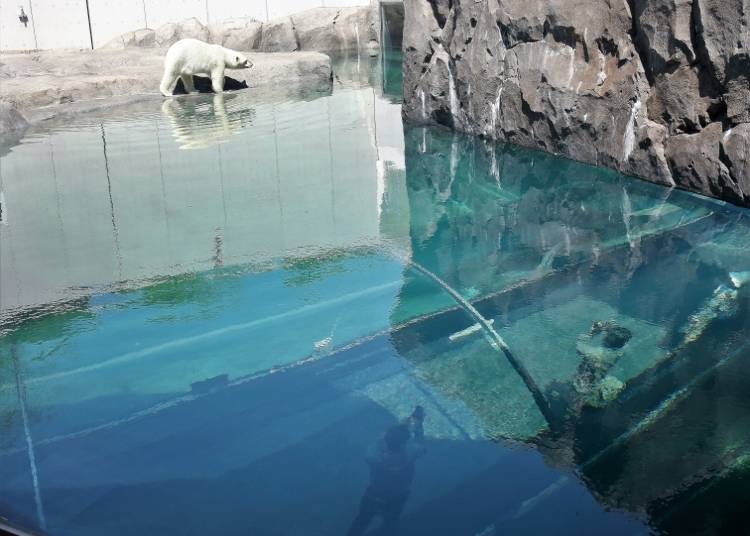
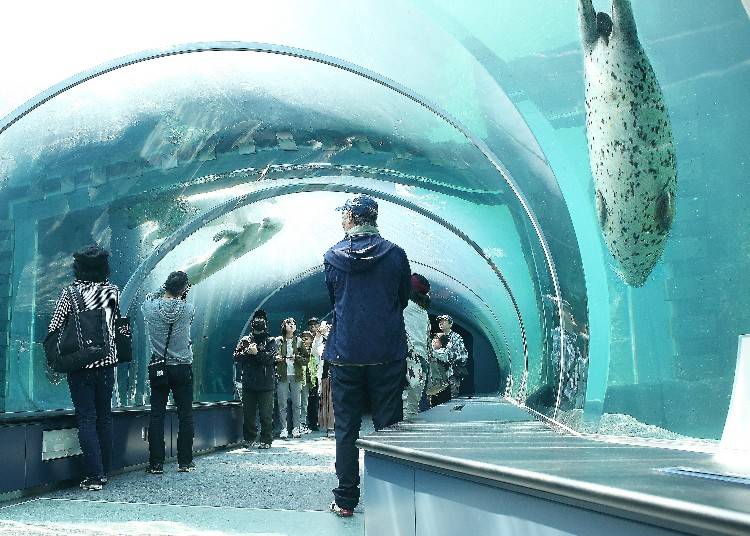
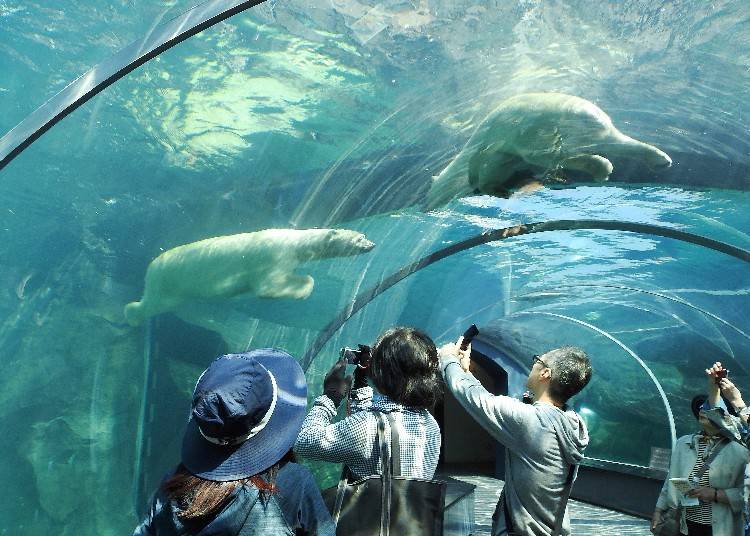
You can see other animals up close, too, such as the aquarium for hippopotamus that gives you a side view of them swimming, as well as exhibitions showing Yezo sika deer and lions. Seeing them up so close is exciting as well as entertaining.
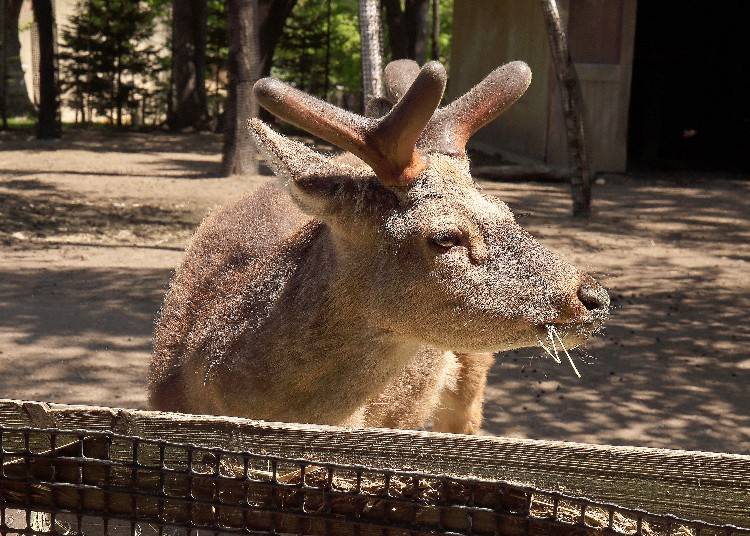
The “Dokidoki [Thrilling] Experience” is another event that you can experience firsthand (no admission charge, however, seating is limited for part of the program, so a limited number of tickets are distributed 30 minutes before the event begins). In this event you can observe the free flight of birds of prey and actually experience letting a large black kite fly and land on your arm.
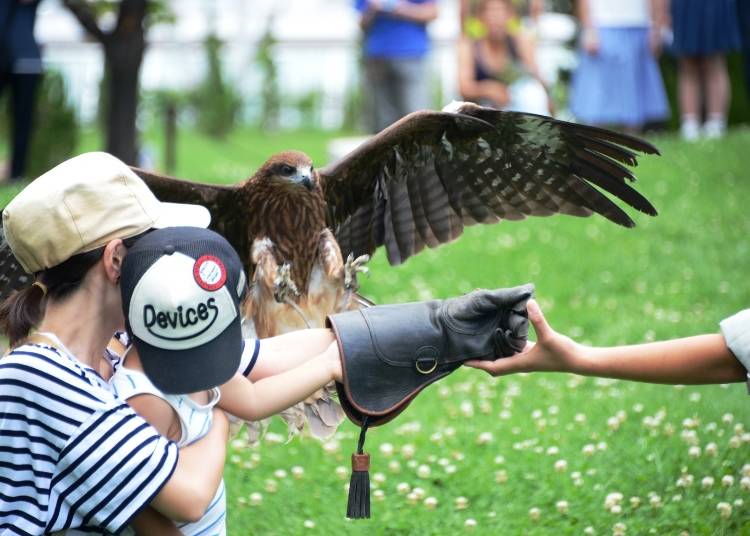
Although the days and times of the Dokidoki Experience are predetermined, sometimes the schedule is changed, so please check the zoo’s website or announcements within the zoo ahead of time. The announcements on zoo bulletin boards are posted in both Japanese and English. Pamphlets are also available in English, Chinese and Korean.
Come and enjoy an exciting firsthand encounter with these animals!
Hours: March 1 ~ October 31, 9:30 AM ~ 4:30 PM; November 1 ~ last day of February, 9:30 AM ~ 4:00 PM
Closed: 2nd and 4th Wednesday every month (the following day if Wed. falls on a national holiday); in April, the whole week, Monday ~ Friday, in which the 4th Wednesday falls; in November, the whole week, Monday ~ Friday, in which the 2nd Wednesday falls
Admission fee: 600 yen for high school aged students and above
Access: 15-minute walk from the Maruyama Park Station on the Sapporo Metro Tozai Subway Line
-

-
Address
3-1, Miyagaoka, Chuo-ku, Sapporo-shi, Hokkaido, 064-0959
View Map -
Nearest Station
Maruyama koen Station (Tozai Line)
15 minutes on foot
- Phone Number 011-621-1426
-
Address
3-1, Miyagaoka, Chuo-ku, Sapporo-shi, Hokkaido, 064-0959
3. Hokkaido Jingu (Hokkaido Shrine): The Most Popular Shrine in Hokkaido
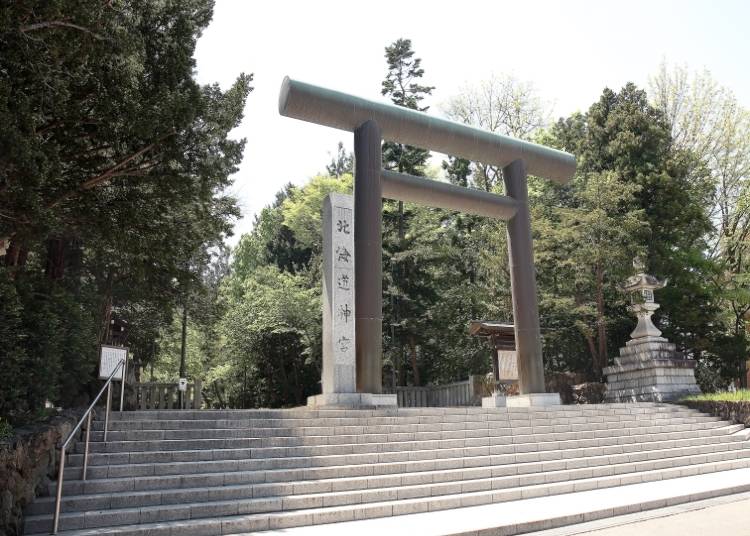
Hokkaido Shrine, situated in the Maruyama District of Sapporo City, is the largest shrine in Hokkaido. It was created in 1869 by imperial order of the Emperor Meiji and dedicated to the spirit of the people who pioneered in Hokkaido. The shrine deeply embodies that spirit which lives on today.
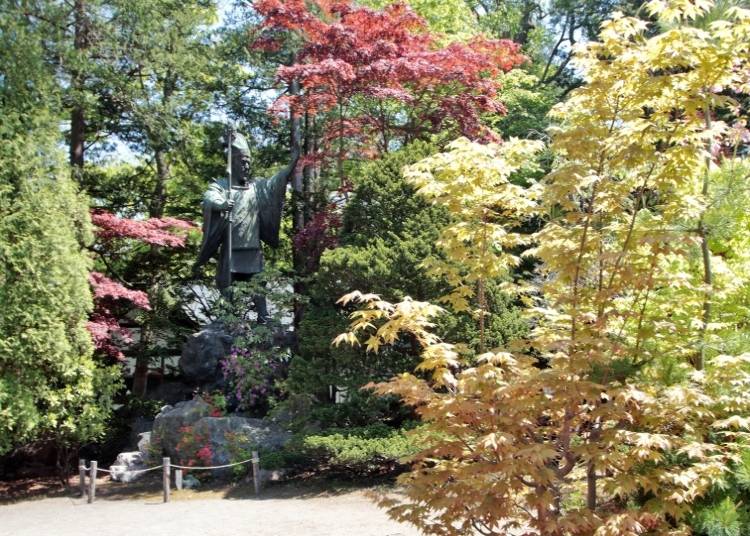
The shrine is crowded with worshippers at the yearend and start of the New Year and also in May when many come to view the cherry blossoms in bloom. The shrine is visited by worshippers from dawn to dusk throughout the year, not only by local citizens, but by people coming from all parts of Hokkaido.
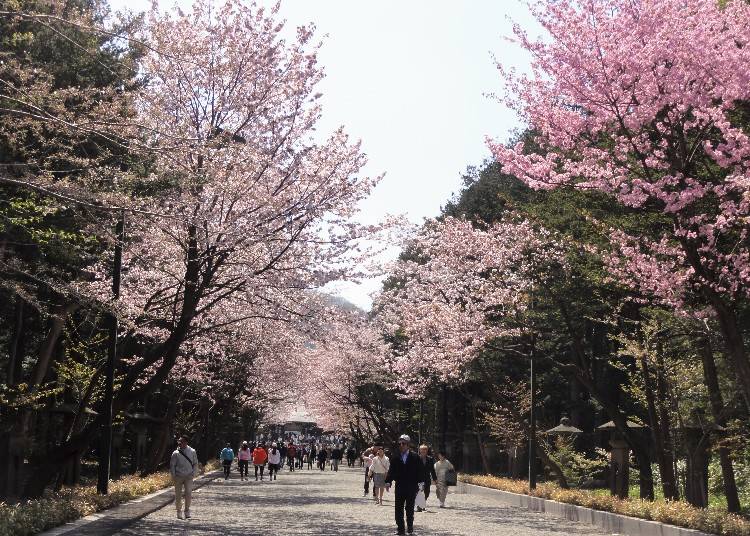

Hokkaido has the youngest history of any region of Japan so for that reason it may seem that there are fewer historical places to visit, but entering the shrine, you can definitely get a strong feeling of Japanese culture. It can be reached after a 10 ~ 15-minute walk from the Maruyama Park Station of the Sapporo Metro Tozai Subway Line. There has been a sharp increase in the number of foreign visitors to the shrine wishing to experience Japanese culture. There are a number of entrances to the shrine, but we recommend entering by passing under the Number Two Torii and following the main path to the main shrine.
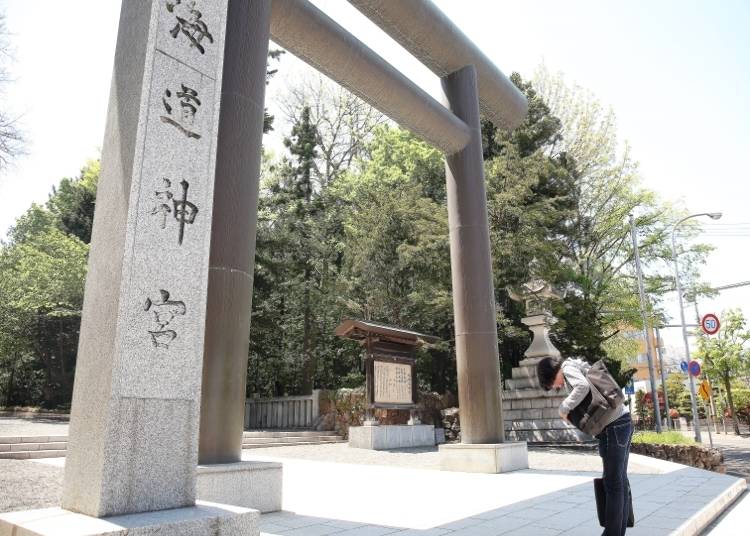
The air is quite different once you enter through the Number Two Torii in front of which runs the main thoroughfare traversed by many cars. It is an atmosphere of natural solitude. And in spite of being close to a residential area you walk through on the way to the shrine, it has a rich, natural environment like one near forests and mountains. You may even see squirrels darting before you on your way into the shrine.
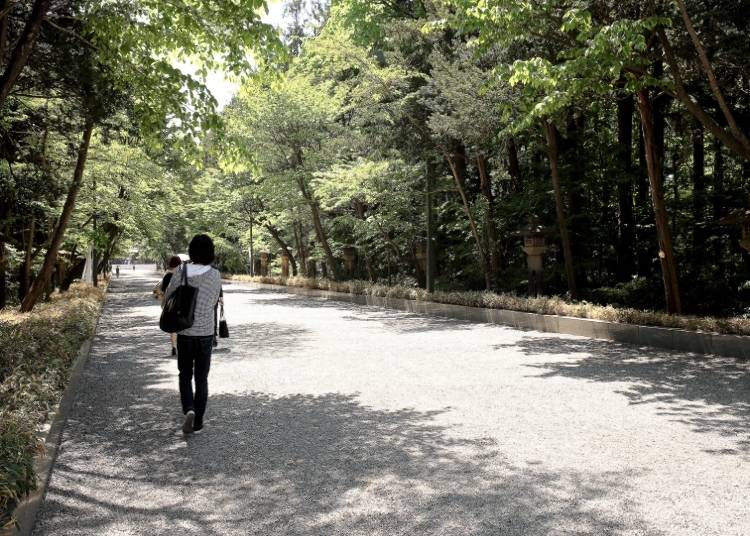
Before you pay your respects at the main shrine, it is customary to purify your hands and mouth first. This purification ritual symbolizes the washing away of sins and other uncleanliness.
The place to do this is at the Chozuya, a basin designed for that purpose, located on your left as you enter the precincts. The etiquette for doing this is as follows.
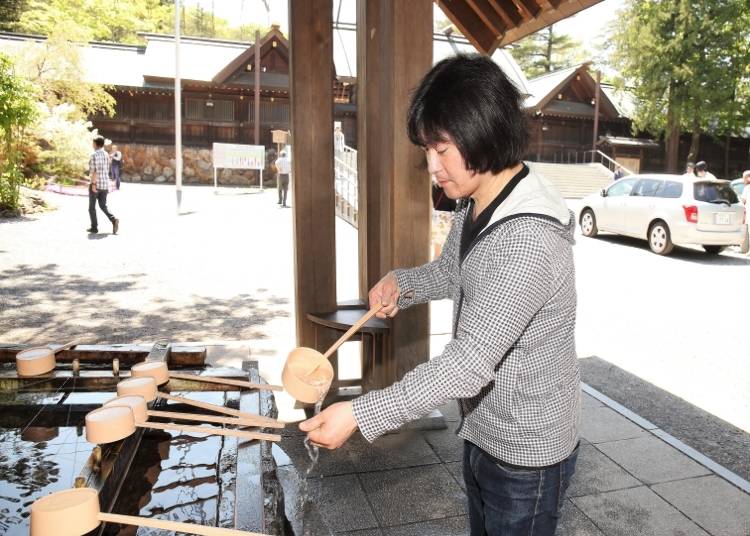
1: Hold the ladle in your right hand, dip it in the water, and pour it over your left hand
2: Take the ladle in your left hand and then pour water over your right hand. Both hands have been purified after doing this.
3: Once again take the ladle in your right hand and pour water into the palm of your left hand held next to your mouth. This purifies your mouth. Be very careful not to let the ladle touch your mouth as that is strictly forbidden!
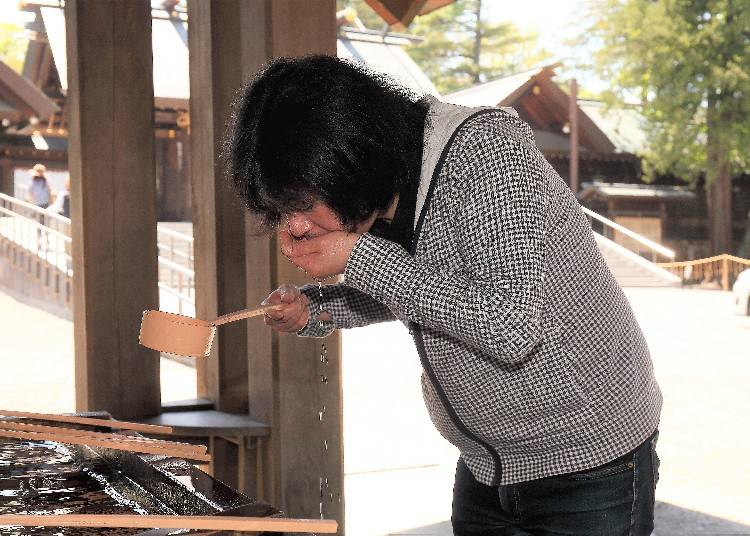
4: Once again pour water over your left hand to again purify it.
5: Using both hands, hold the ladle upright and run water down the handle. This will purify the ladle after it has been handled.
6: Return the ladle to its proper place.
After you have purified your hands and mouth you may next proceed to the main shrine.
There is also proper etiquette for how to do this.
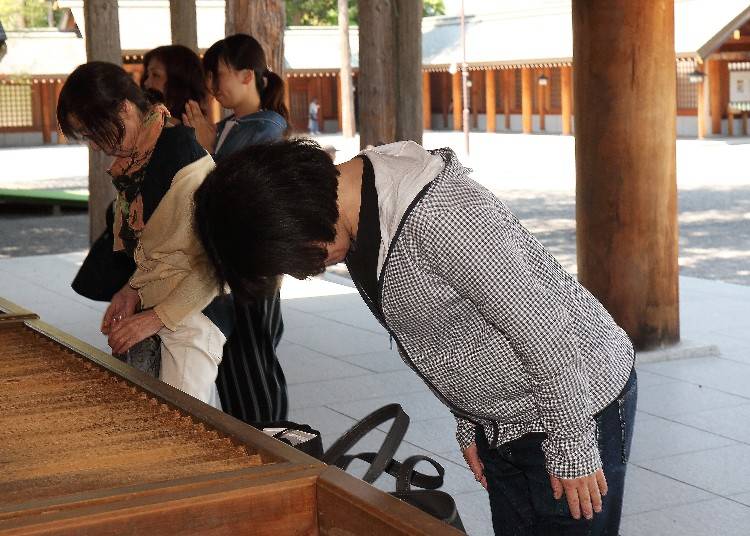
1: After briefly bowing, put money in the saisen (offering) box.
2: Bow to the front twice.
3: Clap your hands twice.
4: Hold your hands in prayer closing your eyes, say a prayer or make a wish, and offer your sincere respect to the gods.
5: Open your eyes, lower your hands, face the front and bow once more
After you have made your offering at the shrine, try drawing an omikuji (fortune). These are sold at shrines and temples for forecasting your fortune.
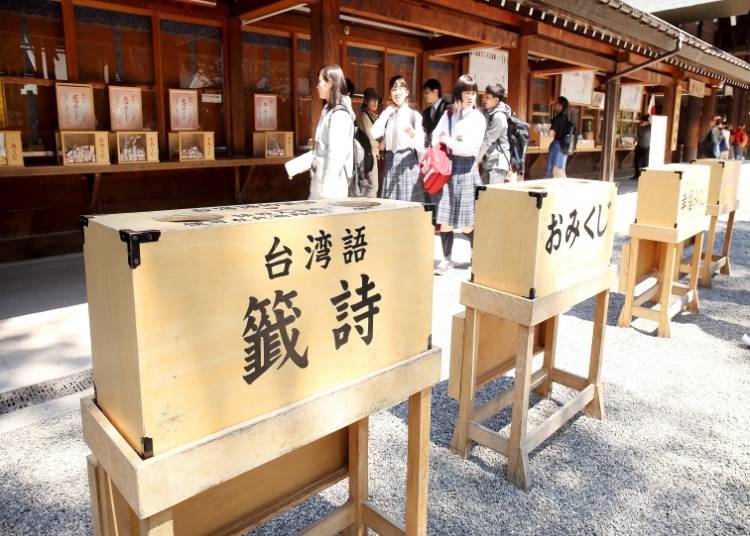
After you have drawn and read your fortune you may either take it with you, or tie it to a special place for that. People tie slips denoting good fortune in order that the good fortune will be “bound” to them. In the case of a slip denoting an unfavorable prediction, the slip is tied to the place in the spirit of “good bye and good riddance”.
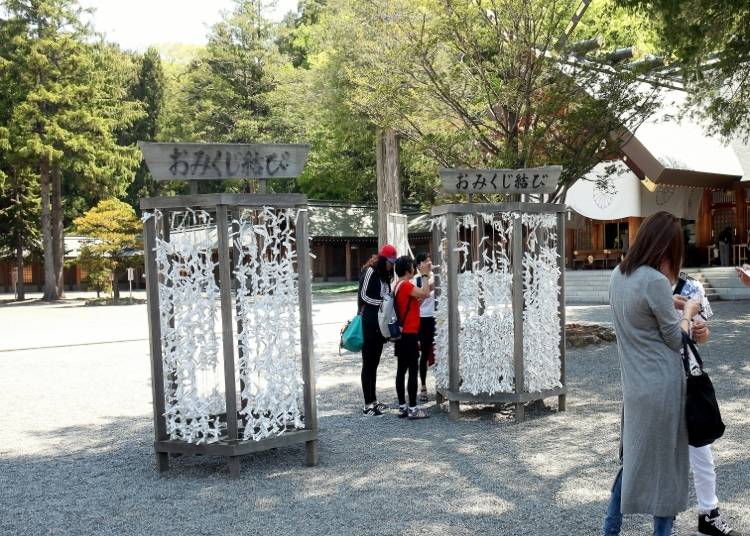

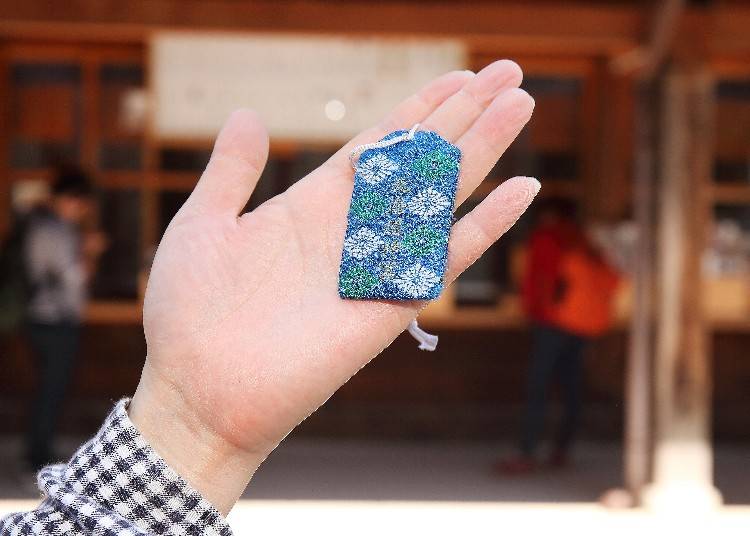
When you leave you can either go back the way you came through the Number Two Torii or through the Park Entrance Torii adjacent Maruyama Park which is a shortcut back to Maruyama Park Station taking only about five minutes. If you are planning to go to the Maruyama Zoo from here, then it is more convenient to leave through the Number Three Torii.
Hokkaido Shrine is located in a natural setting next to Maruyama Park and Maruyama Zoo. It was created during the opening and settling of Hokkaido and is a place where you can experience Japanese culture.
Hours: Summer, 6:00 AM ~ 5:00 PM; Winter, 7:00 AM ~ 4:00 PM *※ Excluding New Years and festival events
Closed: never
Access: 15-minute walk from the Maruyama Park Station on the Sapporo Metro Tozai Subway Line
-

-
Address
474 Miyagaoka, Chuo-ku, Sapporo-shi, Hokkaido, 064-0959
View Map -
Nearest Station
Maruyama koen Station (Tozai Line)
15 minutes on foot
- Phone Number 011-611-0261
-
Address
474 Miyagaoka, Chuo-ku, Sapporo-shi, Hokkaido, 064-0959
- Area
- Category
*Prices and options mentioned are subject to change.
*Unless stated otherwise, all prices include tax.
Recommended places for you
-
Appealing
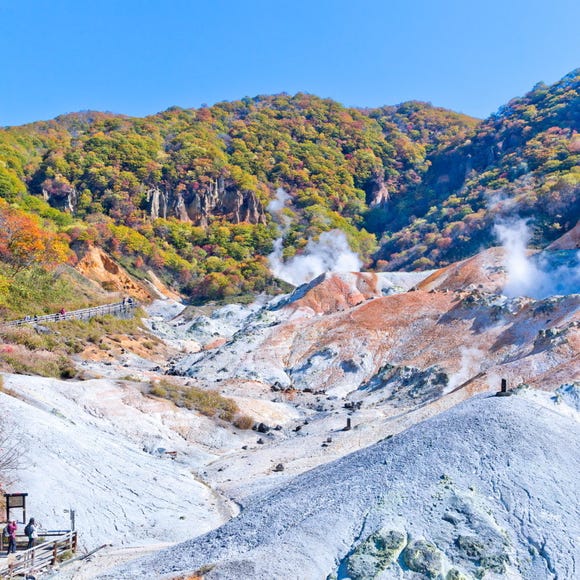
Noboribetsu Onsen
Hot Springs (Onsen) & Bath Houses (Sento)
Noboribetsu / Lake Toya
-

LakeAkan
Rivers, Lakes & Canyons
Abashiri
-

Lipovitan Kids PLAYLOT by BørneLund
Other Amusement
Sapporo / Chitose
-

Niseko Village Ski Resort
Skiing & Snowboarding
Niseko / Rusutsu
-
Appealing

Rukku and Uohei
Izakaya
Sapporo / Chitose
-
Appealing

Shirogane Blue Pond (Aoiike)
Rivers, Lakes & Canyons
Furano / Biei / Sounkyo
-
Ad

Cycling Through Hokkaido: Discover the Beauty of Memuro and the Tokachi Plains
-
Ad

Smart Ways to Avoid Crowds and Enjoy a Safe, Comfortable Trip to Noboribetsu Onsen
-

Expert-Recommended: 9 Hakodate Hotels Serving Up the Best Breakfasts in Town
by: Nobuka Kawashima
-

Great Local Eats: 5 Expert-Recommended Local Chain Restaurants in Hakodate
by: Nobuka Kawashima
-

7 Iconic Hokkaido locations that will make your Instagram shine
by: Himanshi Shah
-
Ad

Sapporo SATUDORA Shopping Guide: Get Souvenirs, Medicine & More at This Iconic Drugstore (Special Deal Inside!)
-

Exploring Moyuk Sapporo: A New Tanukikoji Landmark with an Aquarium and New Donki Store!
-

JR Edition: Visit all of Tokyo in one Day with the Tokyo Metropolitan District Pass!
-

Tokyo Train Map: Your Essential Guide to Subways and Railways
-

(Video) Walking Tour along Narita Omotesando - Quaint Historical Village near Narita Airport!
by: Victor Gonzalez
-

Complete Guide to Buying Japanese Medicine in Japan: Phrases and Vocabulary You Need to Know
-

Top 5 Things to Do in Hokkaido's Biei and Furano Area: Shirogane Blue Pond, Lavender Fields, And More!
- #best sushi hokkaido
- #things to do hokkaido
- #best ramen sapporo
- #what to bring to japan
- #new years in tokyo
- #what to buy in ameyoko
- #japanese nail trends
- #what to do in odaiba
- #onsen tattoo friendly tokyo
- #daiso
- #best sweets otaru
- #japanese fashion culture
- #best nature furano
- #japanese convenience store snacks
- #best japanese soft drinks

















